Transferrin-Bearing, Zein-Based Hybrid Lipid Nanoparticles for Drug and Gene Delivery to Prostate Cancer Cells
- PMID: 38004621
- PMCID: PMC10675605
- DOI: 10.3390/pharmaceutics15112643
Transferrin-Bearing, Zein-Based Hybrid Lipid Nanoparticles for Drug and Gene Delivery to Prostate Cancer Cells
Abstract
Gene therapy holds great promise for treating prostate cancer unresponsive to conventional therapies. However, the lack of delivery systems that can transport therapeutic DNA and drugs while targeting tumors without harming healthy tissues presents a significant challenge. This study aimed to explore the potential of novel hybrid lipid nanoparticles, composed of biocompatible zein and conjugated to the cancer-targeting ligand transferrin. These nanoparticles were designed to entrap the anti-cancer drug docetaxel and carry plasmid DNA, with the objective of improving the delivery of therapeutic payloads to prostate cancer cells, thereby enhancing their anti-proliferative efficacy and gene expression levels. These transferrin-bearing, zein-based hybrid lipid nanoparticles efficiently entrapped docetaxel, leading to increased uptake by PC-3 and LNCaP cancer cells and significantly enhancing anti-proliferative efficacy at docetaxel concentrations exceeding 1 µg/mL. Furthermore, they demonstrated proficient DNA condensation, exceeding 80% at polymer-DNA weight ratios of 1500:1 and 2000:1. This resulted in increased gene expression across all tested cell lines, with the highest transfection levels up to 11-fold higher than those observed with controls, in LNCaP cells. These novel transferrin-bearing, zein-based hybrid lipid nanoparticles therefore exhibit promising potential as drug and gene delivery systems for prostate cancer therapy.
Keywords: cancer therapy; delivery system; prostate cancer; transferrin; tumor targeting; zein-based hybrid lipid nanoparticles.
Conflict of interest statement
The authors declare no conflict of interest.
Figures


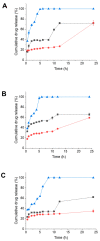
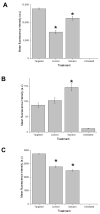
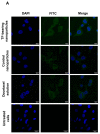


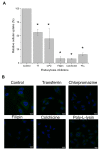
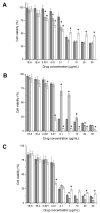
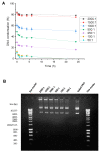

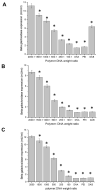
Similar articles
-
Regression of Melanoma Following Intravenous Injection of Plumbagin Entrapped in Transferrin-Conjugated, Lipid-Polymer Hybrid Nanoparticles.Int J Nanomedicine. 2021 Apr 6;16:2615-2631. doi: 10.2147/IJN.S293480. eCollection 2021. Int J Nanomedicine. 2021. PMID: 33854311 Free PMC article.
-
Surface-functionalized nanoparticles for targeted gene delivery across nasal respiratory epithelium.FASEB J. 2009 Nov;23(11):3752-65. doi: 10.1096/fj.09-129825. Epub 2009 Jul 16. FASEB J. 2009. PMID: 19608628 Free PMC article.
-
Targeted nanomedicine for prostate cancer therapy: docetaxel and curcumin co-encapsulated lipid-polymer hybrid nanoparticles for the enhanced anti-tumor activity in vitro and in vivo.Drug Deliv. 2016 Jun;23(5):1757-62. doi: 10.3109/10717544.2015.1069423. Epub 2015 Jul 23. Drug Deliv. 2016. PMID: 26203689
-
Lipid-polymer hybrid nanoparticles as a new generation therapeutic delivery platform: a review.Eur J Pharm Biopharm. 2013 Nov;85(3 Pt A):427-43. doi: 10.1016/j.ejpb.2013.07.002. Epub 2013 Jul 17. Eur J Pharm Biopharm. 2013. PMID: 23872180 Review.
-
Zein-based Nanocarriers as Potential Natural Alternatives for Drug and Gene Delivery: Focus on Cancer Therapy.Curr Pharm Des. 2017;23(35):5261-5271. doi: 10.2174/1381612823666170622111250. Curr Pharm Des. 2017. PMID: 28641543 Review.
References
Grants and funding
LinkOut - more resources
Full Text Sources

